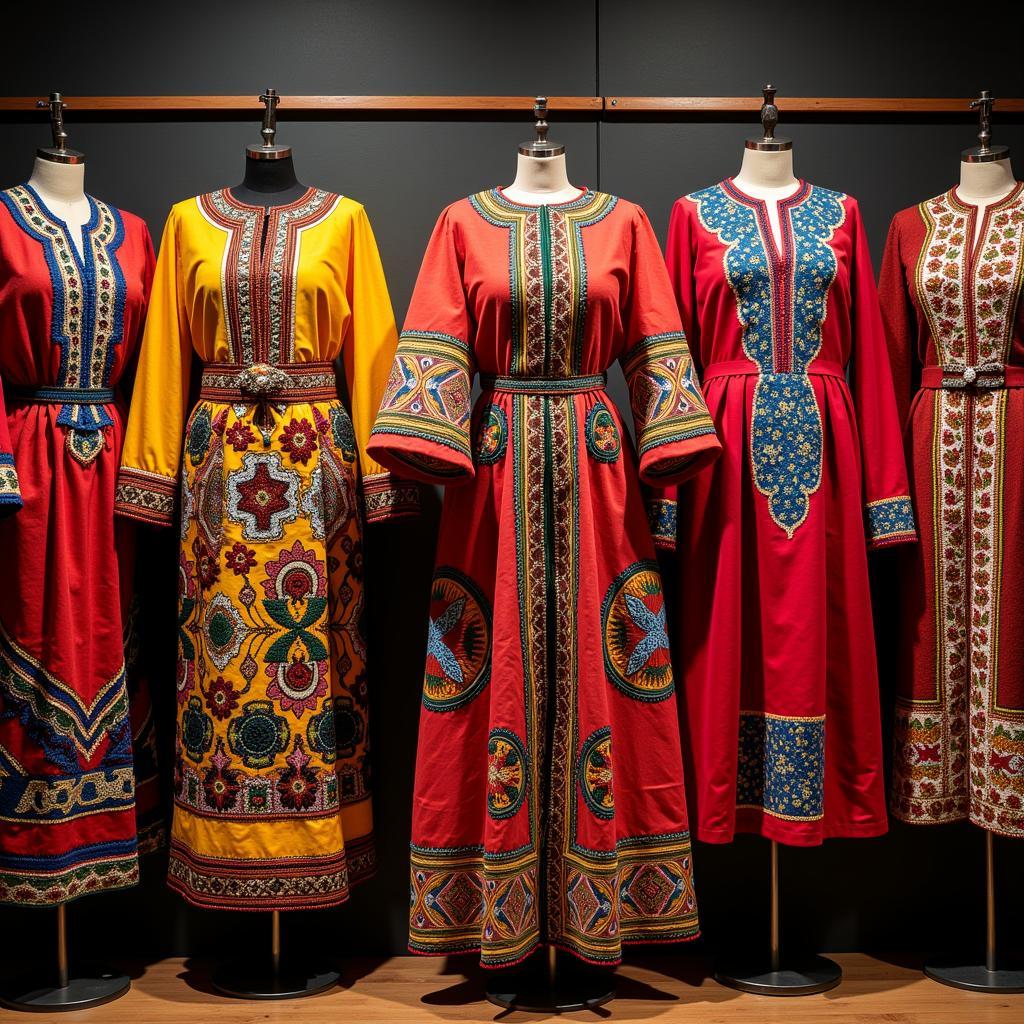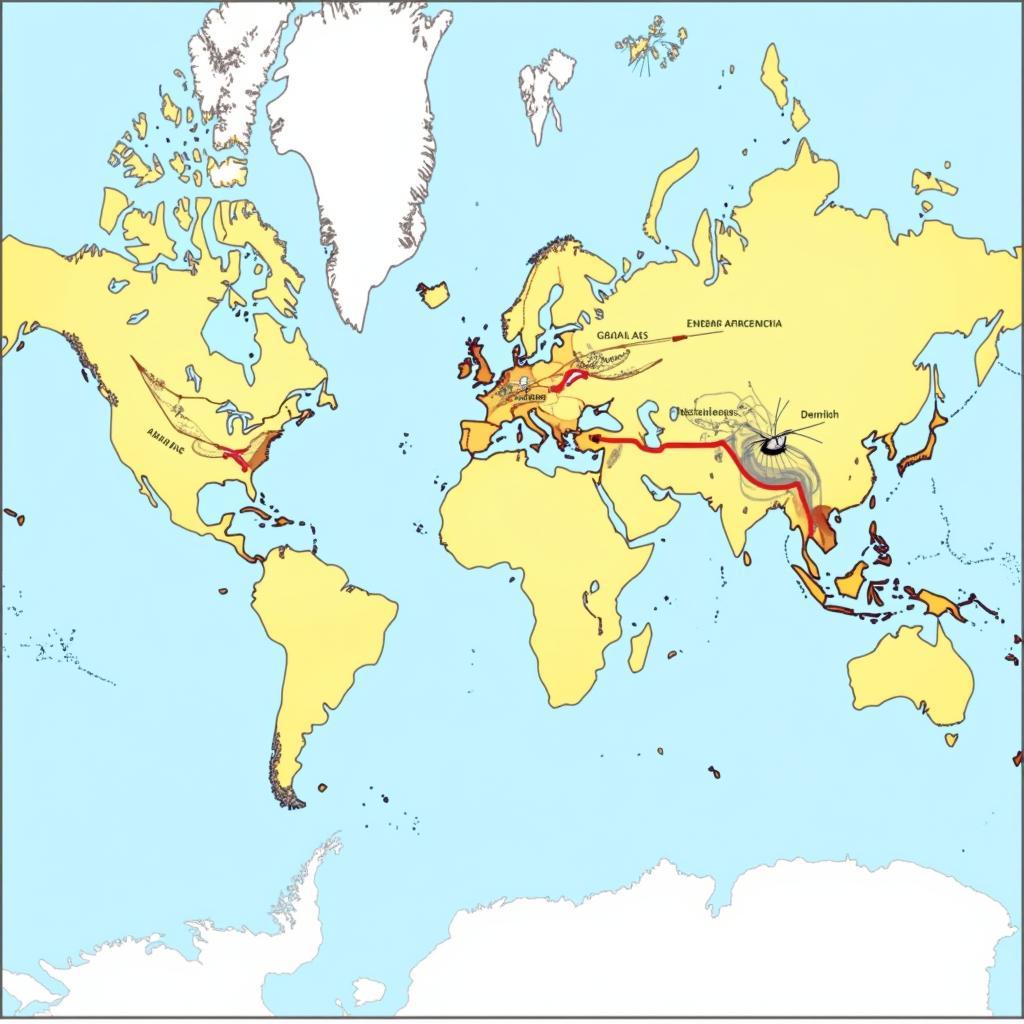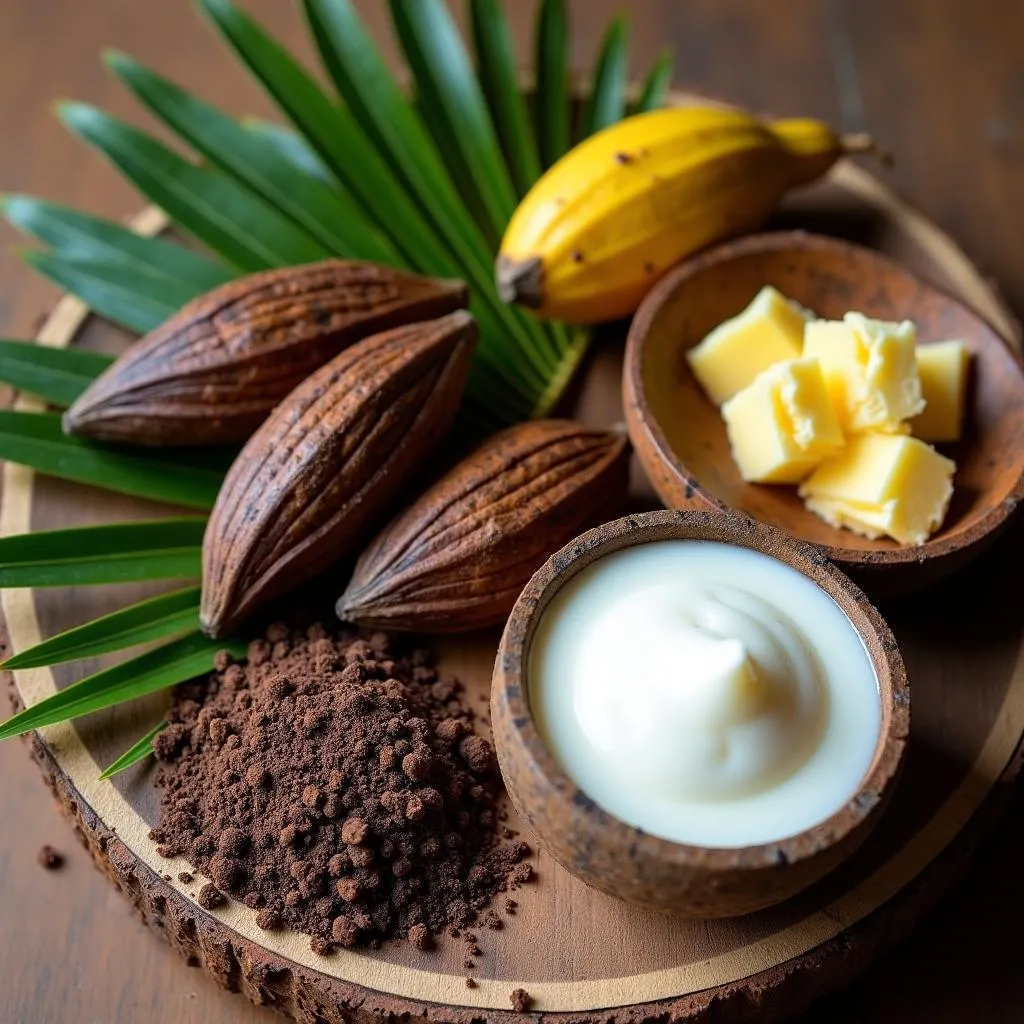Exploring African Countries Native Dress
African countries native dress is a vibrant tapestry woven with threads of history, culture, and tradition. From the flowing robes of North Africa to the intricate beadwork of the south, each garment tells a unique story. Understanding these diverse styles offers a glimpse into the rich heritage and artistic expression of the continent’s many peoples. Let’s embark on a journey to discover the captivating world of African fashion.
The Significance of Native Dress in African Countries
Native dress plays a crucial role in African societies, often representing far more than just clothing. These garments are powerful symbols of identity, status, and belonging. They can signify marital status, age group, or even profession. For example, certain colors and patterns might be reserved for royalty or religious leaders. The materials used, whether handwoven cotton, vibrant silk, or animal hides, also carry meaning and reflect the resources and craftsmanship of specific regions. What’s more, African countries’ native dress is constantly evolving, blending traditional elements with contemporary influences, reflecting the dynamic nature of African cultures. This fascinating interplay between old and new makes exploring these garments even more compelling. Even with the influx of Western fashion, traditional attire remains a powerful statement of cultural pride. For a closer look at some specific examples, check out articles featuring african countries 5 native dress.
 African Native Dress: Ceremonial Garments
African Native Dress: Ceremonial Garments
A Colorful Journey: Exploring Regional Variations of African Countries Native Dress
Africa is a vast continent, and its fashion is just as diverse. Exploring regional variations reveals a wealth of styles, each with its own distinct character. In North Africa, long, flowing robes like the djellaba and kaftan are common, often adorned with intricate embroidery. West Africa is known for its brightly colored fabrics and elaborate headwraps, such as the Gele in Nigeria. East Africa boasts a range of styles, from the kanga, a colorful printed cloth worn by women in Kenya and Tanzania, to the white cotton kanzu worn by men. Southern Africa is home to intricate beadwork and animal hide garments, reflecting the region’s rich cultural heritage. These are just a few examples of the incredible diversity of African countries’ native dress. Understanding these differences not only deepens our appreciation for African fashion but also provides valuable insight into the continent’s rich tapestry of cultures. For updates and news related to the African diaspora, you might find african diaspora news insightful.
What are some common fabrics used in African native dress?
Cotton, silk, linen, wool, and animal hides are commonly used, often reflecting the resources and climate of specific regions.
How is African native dress adapting to modern trends?
While maintaining traditional elements, African designers are incorporating modern silhouettes, fabrics, and embellishments, creating innovative and contemporary styles. For more information, you might find it helpful to look up articles about african countries native 5dress.
Why is preserving traditional dress important?
Preserving traditional dress is crucial for safeguarding cultural heritage, passing down skills and knowledge, and promoting cultural pride and identity.
The Future of African Fashion: A Global Influence
African fashion is increasingly gaining global recognition, influencing designers and fashion trends worldwide. Its vibrant colors, unique patterns, and rich cultural significance are captivating audiences around the globe. From high-fashion runways to everyday street style, African-inspired designs are becoming increasingly popular, showcasing the dynamism and creativity of the continent’s fashion scene. This growing influence is a testament to the enduring power and beauty of African countries native dress. You can find information about african countries 5native 5dress for more in-depth details.
“African fashion is not just about clothes; it’s a powerful expression of identity, history, and culture,” says Abena Serwaah, a renowned Ghanaian fashion designer. “Each garment tells a story, and it’s a story worth sharing with the world.”
“The beauty of African fashion lies in its diversity,” adds Adebayo Okeowo, a Nigerian textile artist. “From the intricate beadwork to the vibrant prints, every region has something unique to offer.”
Conclusion
African countries’ native dress offers a captivating glimpse into the continent’s rich cultural tapestry. From the symbolic patterns to the vibrant colors and diverse fabrics, each garment tells a story. By exploring these unique styles, we gain a deeper understanding and appreciation for the artistic expression, history, and traditions of Africa’s diverse peoples.
FAQ
- What is the significance of headwraps in African culture?
- Are there specific occasions for wearing certain types of native dress?
- How are traditional weaving and dyeing techniques preserved?
- What are some contemporary African fashion designers to follow?
- Where can I learn more about the history of African textiles?
- What is the role of jewelry in traditional African attire?
- How can I support sustainable African fashion brands?
Need help with African-related inquiries? Perhaps african embassy in india might be a useful resource. For other questions regarding cultural heritage or travel, feel free to browse our website for more related articles.
For assistance, contact us: Phone: +255768904061, Email: kaka.mag@gmail.com, or visit us at Mbarali DC Mawindi, Kangaga, Tanzania. Our customer service team is available 24/7.


